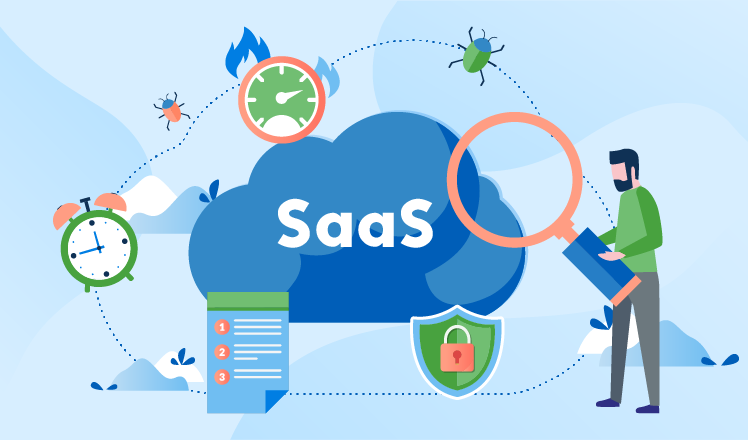
SaaS Development from Scratch
The year 2022 seems to be the best when it comes to SaaS models, as one of the most beneficial types of software is available.
For software developers, adopting the SaaS model is more beneficial in terms of time to market, revenue generation, scalability, and ease of adding features or functionalities as per customer demands.
The global SaaS market is expected to reach about US $172 billion in 2025 at the latest, which means that there are plenty of opportunities for software providers. If you’re looking for a way to launch your idea into a successful business and need a Software platform that you can rely on, then this is the way to go.
But SaaS application development is easier said than done.
What is SaaS?
SaaS is the recommended solution for most small to medium businesses. It reduces operational costs and offers traditional in-house solutions that are more capable than apps. The SaaS app is the perfect solution if you’re looking to invest in a broad range of business software including payroll and HR, office, sales, and CRM. All of these need to change as your company grows and the SaaS app will let you do that without any extra cost. Starting with a small budget, anyone looking for cloud-based technology can use SaaS applications.
These are a few helpful steps that can help you plan and get your SaaS built quickly:
- Market Research
After doing a lot of research, carefully evaluate what you should offer in your app to draw users’ attention. What features should your app have to engage your customers? A system requirement specification (SRS) document helps you figure it out. An experienced software team will do their research and create a thorough SRS document to help you make quick and easy planning decisions. This can save you both time & effort.
- Idea Validation
To validate your SaaS idea, you challenge it: Would people pay for this? If you create custom software and make it available to people as a service and in return, you charge them money for it, you better be sure this service is worth the investment.
The importance of validating your idea for a SaaS (Software as a Service) project is even greater than it is for most businesses since your success relies solely on having consumers pay money to use the software.
A key step in the validation process is understanding that you may have to change the idea you had in your head based on the feedback you receive. Your original idea might not solve the problem in the way people need it to or it might not be as feasible.
- Prototyping
Once you know what features make up your MVP, work on designing a great product that both looks good and is user-friendly.
Wireframes give you a chance to validate your user stories and the work involved before investing time in the design phase. This helps figure out any potential gaps, surprises, or discrepancies before anything is made visual. Once you’re done, you’ll be able to create an application that isn’t only functional but also has a great UI. UI designers add some color and make the screens enjoyable with attention to typography, fonts, icons etc.
- Tech Stack
There are various technologies of choice and development tools for SaaS. The tools can help build a perfect application. The selection of professional tools is also essential to understanding how a product is created. A mix of libraries, languages, and also frameworks is necessary. It relies upon a particular type of SaaS. It is still crucial to make note of the tech stack that the team uses to leverage SaaS platform founders’ needs.
- MVP
With agile development, you can start building your application with a Minimum Viable Product. An MVP is like a trimmed-down version of the full-scale app, with just the basic functioning features and services for the application to work without any frills.
MVPs allow SaaS creators to iron out any imperfections before they launch to the public. Feedback from users can help developers create a better application for everyone and create benchmarks for future product development.
- Scalability
After you have successfully validated your MVP, you can now focus on scaling up your application and developing a sustainable business model. With every new feature or service you plan to add to your app, you need these too: more features and more infrastructure.
Likewise, SaaS clients may have to shut down their applications under increased load. If the target audience is too large, then it does not matter even if you implement vertical development, which is the current trend in digital businesses.
- Skilled Development Team
The amount of team members for application development varies depending on the SaaS and its complexity. This is an important aspect of the creation of the SaaS. You require at least the following development team configuration:
- Business Analyst
- Project Manager
- UI/UX Designer
- Frontend Developer
- QA tester
Conclusion
Well, SaaS development is easy if you would consider a few checklists. Keep that in mind. Happy coding!






